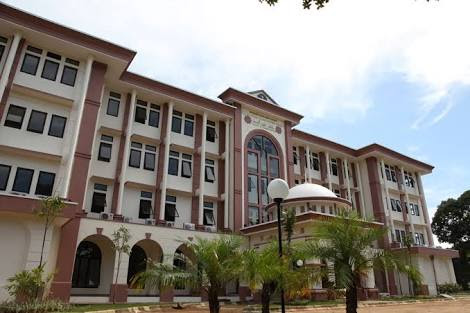IDENTIFICATION OF STUDENTS' MISCONCEPTIONS ON INTEGRAL TOPIC USING A FOUR-TIER DIAGNOSTIC TEST
Abstract
Abstract:
Every student has a different ability to understand mathematical concepts, thus affecting the students' misconceptions. The research aims to identify the misconceptions using a four-tier diagnostics test method in integral topic. This research uses the qualitative method with study case strategy. The data are obtained from the four-tier diagnostic test on the integral topic. The subjects in this research are XII grade students at MAN Kota Magelang. The research results show that students' misconceptions divided into several categories of misconceptions, namely misconceptions, did not understand concepts, understood some concepts, understood concepts, and were undefined. The cause of students experiencing misconceptions on integral topics is that there are too many formulas to be memorized by students, and teacher learning methods are less attractive to students' learning interests on integral topics.
Abstrak:
Setiap siswa memiliki kemampuan berbeda untuk memahami konsep matematika, sehingga memengaruhi kesalahpahaman pada siswa. Penelitian ini bertujuan untuk mengidentifikasi kesalahpahaman dengan metode uji diagnostik empat-tingkat dalam materi integral. Penelitian ini menggunakan metode kualitatif dengan strategi studi kasus. Data diperoleh dari uji diagnostik empat-tingkat pada materi integral. Subjek penelitian ini adalah siswa kelas XII di MAN Kota Magelang. Hasil penelitian menunjukkan bahwa beberapa kategori kesalahpahaman, yaitu kesalahpahaman, tidak memahami konsep, memahami beberapa konsep, memahami konsep, dan tidak terdefinisi. Penyebab siswa mengalami kesalahpahaman tentang materi integral adalah bahwa ada banyak rumus yang harus dihafal oleh siswa dan metode pembelajaran guru kurang menarik bagi minat belajar siswa pada materi integral.
Downloads
References
Arnon, I., Cottrill, J., Dubinsky, E., Oktaç, A., Roa Fuentes, S., Trigueros, M., & Weller, K. (2014). APOS Theory: A framework for research and curriculum development in mathematics education. New York, Heidelberg Dordrecht London: Springer. Retrieved from https://www. springer.com/gp/book/9781461479659.
Dahar, R. W. (2011). Teori-teori belajar dan pembelajaran. Jakarta: Erlangga, 136, 141.
Eriana, E., Kartono, K., & Sugianto, S. (2019). Understanding ability of mathematical concepts and students' self-reliance towards learning by implementing manipulative props (APM) on Jigsaw technique. Journal of Primary Education, 8(2), 176-183. Retrieved from https://journal. unnes.ac.id/sju/index.php/jpe/article/view/25984.
Fariyani, Q., Rusilowati, A., & Sugianto. (2017). Four-tier diagnostic test to identify misconceptions in geometrical optics. Journal of Innovative Science Education, 4(2), 41-49. https://doi.org/10.15294/USEJ.V6I3. 20396.
Hasratuddin. (2015). Mengapa Harus Belajar Matematika?. Medan: Perdana Publishing.
Krajewski, K., & Schneider, W. (2009). Exploring the impact of phonological awareness, visual–spatial working memory, and preschool quantity–number competencies on mathematics achievement in elementary school: Findings from a 3-year longitudinal study. Journal of Experimental Child Psychology, 103(4), 516-531. https://doi.org/10.1016/j.jecp.2009. 03.009.
Monariska, E. (2019). Analisis kesulitan belajar mahasiswa pada materi integral. Jurnal Analisa Prodi Pendidikan Matematika, 5(1), 9-19. https:// doi.org/10.15575/ja.v5i1 .4181.
Mutlu, A., & Sesen, B. A. (2015). Development of a two-tier diagnostic test to assess undergraduates' understanding of some chemistry concepts. Procedia-Social and Behavioral Sciences, 174, 629-635. https://doi.org/ 10.1016/j.sbspro.2015.01.593.
Ozkan, E. M., & Ozkan, A. (2012). Misconception in exponential numbers in IST and IIND level primary school mathematics. Procedia-Social and Behavioral Sciences, 46, 65-69. https://doi.org/10.1016/j.sbspro.2012. 05.069.
Peng, P., Namkung, J., Barnes, M., & Sun, C. (2016). A meta-analysis of mathematics and working memory: Moderating effects of working memory domain, type of mathematics skill, and sample characteristics. Journal of Educational Psychology, 108(4), 455. https:// psycnet.apa.org/doi/10.1037/edu0000079.
Pesman, H., & Eryılmaz, A. (2010). Development of a three-tier test to assess misconceptions about simple electric circuits. The Journal of educational research, 103(3), 208-222. https://doi.org/10.1080/00220670903383002.
Raghubar, K. P., Barnes, M. A., & Hecht, S. A. (2010). Working memory and mathematics: A review of developmental, individual difference, and cognitive approaches. Learning and individual differences, 20(2), 110-122. https://doi.org/10.1016/j.lindif.2009.10.005.
Ramadhani, F. dan Jazwinarti. (2019). Pengaruh strategi pembelajaran relating, experiencing, applying, cooperating, transferring terhadap kemampuan pemecahan konsep matematis peserta didik kelas X MIPA SMAN 5 Bukittinggi. Jurnal Edukasi dan Penelitian Matematika. 8(1), 57-65. Retrieved from http://ejournal.unp.ac.id/students/index.php/pmat/article/ view/6237.
Sefik, O., & Dost, S. (2019). The analysis of the understanding of the three-dimensional (Euclidian) space and the two-variable function concept by university students. The Journal of Mathematical Behavior, 100697. https://doi.org/10.1016/j.jmathb.2019.03.004.
Serhan, D. (2015). Students' Understanding of the Definite Integral Concept. International Journal of Research in Education and Science, 1(1), 84-88. Retrieved from https://eric.ed.gov/?id=EJ1105099.
Setyowati, B. E., Widiyatmoko, A., & Sarwi, S. (2015). Efektivitas model pembelajaran kooperatif jigsaw II berbantuan LKS untuk meningkatkan pemahaman konsep dan karakter siswa. Unnes Science Education Journal, 4(3). https://doi.org/10.15294/usej.v4i3.8844.
Sholihat, F. N., Samsudin, A., & Nugraha, M. G. (2017). Identifikasi miskonsepsi dan penyebab miskonsepsi siswa menggunakan four-tier diagnostic test pada sub-materi fluida dinamik: azas kontinuitas. Jurnal Penelitian & Pengembangan Pendidikan Fisika, 3(2), 175-180. https://doi.org/10.21009/ 1.03208.
Siagian, M. D. (2017). Pembelajaran matematika dalam persfektif konstruktivisme. NIZHAMIYAH (Jurnal Pendidikan Islam dan Teknologi Pendidikan), 7(2), 61-73. Retrieved from http://jurnaltarbiyah.uinsu.ac.id /index.php/nizhamiyah/article/188.
Sugiyono. (2013). Metode penelitian pendidikan: Pendekatan kuantitatif, kualitatif, dan R&D. Bandung: Alfabeta, CV.
Suryani, E. S., Rusilowati, A., & Wardono, W. (2016). Analisis Pemahaman Konsep IPA Siswa SD Menggunakan Two-Tier Test Melalui Pembelajaran Konflik Kognitif. Journal of Primary Education, 5(1), 56-65. https://doi.org/10.15294/jpe.v5i1.12893.
Tarmizi, R. A. (2010). Visualizing Student's Difficulties in Learning Calculus. Procedia-Social and Behavioral Sciences, 8, 377-383. https:// doi.org/10.1016/j.sbspro.2010.12.053.
Yudianto, E. (2015). Profil antisipasi siswa SMA dalam memecahkan masalah integral. Kreano, Jurnal Matematika Kreatif-Inovatif, 6(1), 21-25. https:// doi.org/10.15294/kreano.v6i1.4472.
Zaleha, Samsudin, A., & Nugraha, M. G. (2017). Pengembangan instrumen tes diagnostik VCCI bentuk four-tier test pada konsep getaran. Jurnal Pendidikan Fisika dan Keilmuan (JPFK), 3(1), 36. Retrieved from https:// core.ac.uk/download/pdf/194870255.pdf.
Zainal, Z. (2007). Case study as a research method. Jurnal Kemanusiaan, 5(1), 1-6. Retrieved from https://jurnalkemanusiaan.utm.my/index.php/ kemanusiaan/article/view/165.
Copyright (c) 2020 Fadhilah Rahmawati, Megita Dwi Pamungkas, Bagas Ardiyanto, Zakkiyatun Nisa Fadhilatullathifi, Gunawan, Ditaul Safitri

This work is licensed under a Creative Commons Attribution 4.0 International License.


